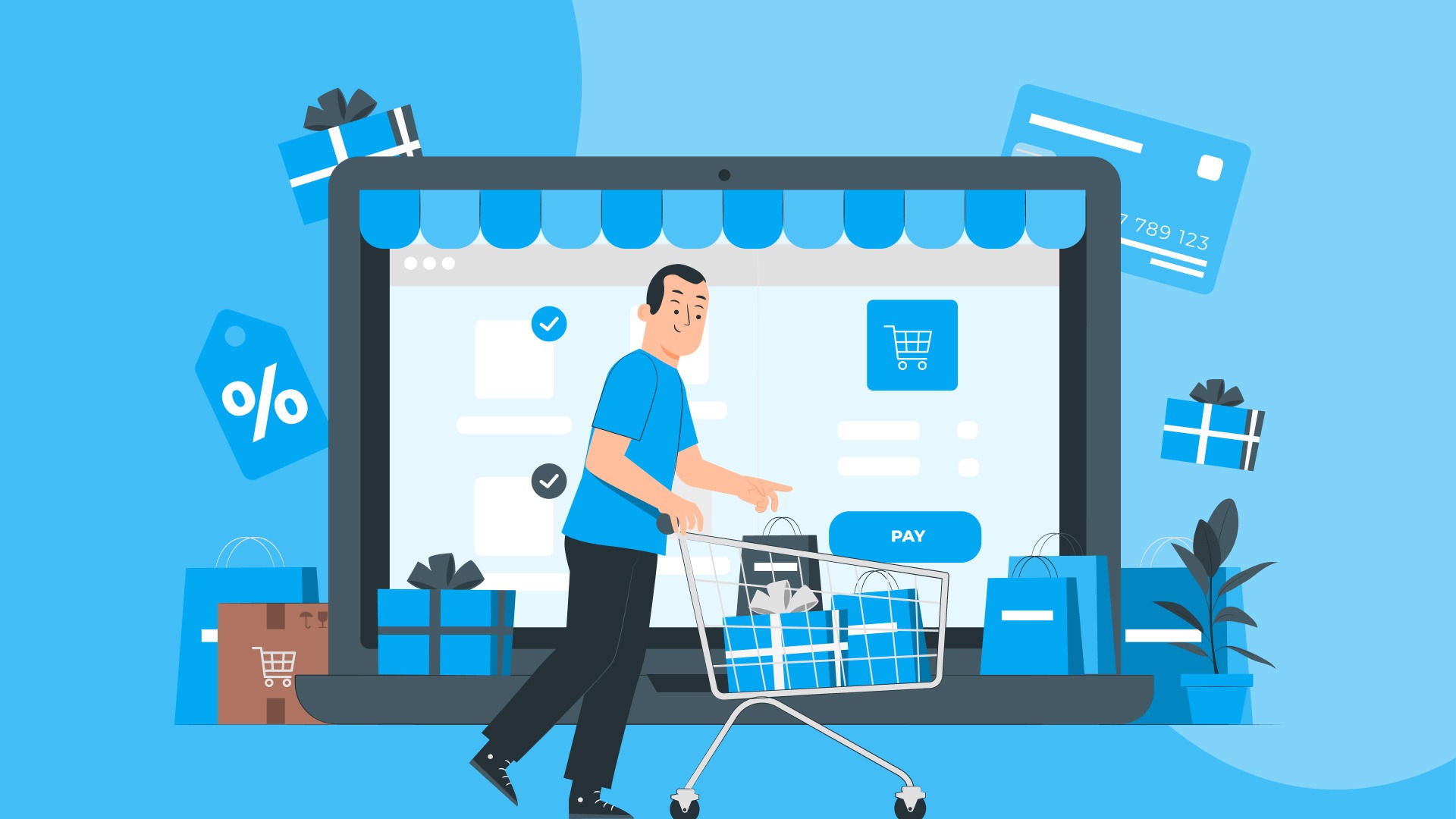With the help of an On-demand fuel delivery app, customers enjoy the facility of refueling their vehicles anywhere in the city without reaching a fuel station. The consumer just needs to do is to schedule the delivery, and pin the vehicle’s location. After that, a delivery boy arrives and refills your vehicle’s tank at the preferred time and location.
How Does It work?
- Users have to install the app and register on it.
- Set the time and location of the vehicle
- Adds the quantity of petrol required and confirms the order
- The delivery boy refills the vehicle
How to Create a Fuel Delivery App Development?
There are 5 steps involved in creating an on-demand delivery fuel app:
Obtain Necessary Permits and Licenses from the Government
Getting a permit from the government is the first and foremost step in starting a new fuel delivery app. There are lots of rules and regulations, licensing, and guidelines for setting up, operating, and scaling up an on-demand fuel delivery that goes through a long tail process of acquiring, storing, and consuming the fuel. So, make sure that you receive a license from the government so that you can’t be in a fix.
Get a GPS-Enabled Fuel Delivery Fleet or Transportation System
You should confirm that your fuel delivery trucks and vehicles are all integrated with GPS so that delivering fuel to bikes, cars, transport fleets, or boats can be done successfully. Make sure it also includes self-contained, demountable fuel dispensing units, and vehicles should be designed in a way that they are able to fight fire hazards with the emergency medical care unit.
Along with that, you should also ensure that drivers you hire for the fuel delivery tank can fight in emergency conditions and also follow the specific advice of the emergency responder and strictly comply with hazard-specific safety and health standards enforced in the health act. It is good to develop a handout or do a presentation that simply shares the general code of conduct and disaster management tips with your drivers.
Partnership With Fuel Stations or Gas Service Providers
There are a lot of public and private dealers who supply petrol and diesel to on-demand fuel solutions corporations. or to private companies. You can tie up or make partnerships with them and streamline the delivery operations. There are three companies in INDIA that supply oil – BPCL, IOC, and HP. In USA Chevron Corp, ExxonMobil Corp., In UAE, Abu Dhabi Company(ADNOC), Abu Dhabi National Energy Company (TAQA), and Emirates National Oil Company (ENOC) is there who deals in oil marketing
Develop a Fuel Delivery Mobile App and Web Portal
After completing the above steps you need to structure and lay the foundation of your fuel delivery app. Here are some points that you should keep in mind while developing an app:
- Register the app domain name: you should search and book a unique name for your app that is memorable to the people, short, and search-engine friendly and you should also consider that name is relatable to the fuel delivery app concept.
- Search for a reliable on-demand fuel delivery app development company: you should search for a company that engages customers, and endure lasting brand customers.
- Create a scope document listing the feature you want to include: You should keep in mind that you have to think of features for 3 stakeholders: customers app, Driver app, and admin panel. So, you should list all the points (features and functionalities you want to add to your app.
Integrate Offline and Online Marketing
Prepare a marketing budget and afterward create an online as well as an offline marketing campaign and set your parameters for measuring the outcomes. It will help you to stay financially stable and give you an idea of how much you should spend on each strategy. This ability empowers your decision-making. The best way to structure and convey your brand message and value proposition more effectively are by combining your online and offline marketing campaigns.
Also Read- On-Demand Delivery Apps – Types, Cost & Key Features
How Does an On-Demand Fuel Delivery App Work?

Sign up: Firstly customers need to download the app and create an account on the app by giving some necessary details to log in or sign up.
Place the order: After creating an account on the app users need to place their order by selecting the product and the brand name with the price.
Make the payment: Afterward, the user needs to do payment by selecting the mode of payment that is usually provided by every developer in the app such as cash on delivery, Google Pay. The customer can explore the range of payments under digital mode.
Order processing: When payment is done by the customer, the fuel delivery company assigns this task to the nearby driver, that driver accepts the order and refills the required amount of fuel, and ensures the timely delivery.
Order delivery: When a driver accepts the order then he moves ahead toward the destination by tracking the address and finding the correct path with the help of the map or feature of real-time tracking.
Order fulfillment: After the full success of order completion the user can now make the payment. At this moment customers have the option to choose from digital or cash mode. The customer received a receipt including order details, price, and other information.
Key Features to Developing an Online Fuel Delivery App
1. Customer App
- Easy Onboarding: You do not need to make it a more complex process of registration for the customers rather you should provide smooth, friction-free app access to customers. You can integrate social media plugins to create the app account that allows them to create a single-tap account without filling multiple fields. You can also have a mobile phone and OTP verification for the login and sign-in.
- Enable location: This option enables customers to share their current vehicle location. Through the App, you can ask them to adjust and pin the location where their vehicle is parked. This helps the delivery driver of the fuel tank to trace the real-time location of the vehicle and refill the vehicle tank.
- Select Fuel Type: With this feature, customers are able to choose the category of fuel they want on demand such as petrol, diesel, or gas. Users can also pick the number of required files with this feature.
- Check to price: In this feature, users are able to check the price of the required fuel according to the quantity. They can able to see the total price of the fuel by tapping “yes” and taken to the payment scene
- Flexible Online payment: You should allow multiple and flexible types of modes such as debit /credit cards, Google Pay, PayPal, e-wallet, or any other popular modes of payment. This varies from state to state and provides a hassle-free and secured payment transaction.
- Real-time tracking: It will give the estimated time of arrival and also allows users to track the real-time location of the delivery driver.
- Order history: Customers can take a glance at bills and calculate the total amount spent on fuel with this feature.
- Reviews and Ratings: Customers can provide ratings and reviews according to the customer’s experience with the delivery driver.
2. Delivery Person App
- Sign up / Login: This driver creates his account and provides all the necessary information such as documents, license, and profile details.
- Active status: The driver can have full flexibility and liberty to manage his/her work timings by setting modes of active and inactive. By this, they can become job satisfied.
- Dashboard: Drivers are able to view their earnings on the dashboard including scheduled and finished deliveries.
- Receive request: In this feature, the driver has the opportunity to accept or reject the driving request.
- Payment: the driver can check the payments that they earn in one day.
- Digital signature: In this feature, the driver can take a signature from the consumer after the fuel delivery.
- Help and support: With this feature drivers can take help whenever needed.
3. Admin panel
- Login /Signup: The admin can log in to the web-based panel through email and password securely.
- Dashboard: Admin can take full details of delivery drivers, customers, and total earnings on the dashboard in the app
- Fuel tankers: Fuel tankers can be updated by adding, editing, or deleting, by the admin in the admin panel.
- Features management: With this feature, the admin can manage the payment, update the customers and drivers, and any other information.
- Push notifications: The admin can manage notifications and receive vital event notifications.
Also Read- How On-Demand Apps are changing the Business Face?
Some Famous Market Players of Fuel Delivery Apps

Booster (USA): Booster is a popular service in the USA. It is founded in 2015 by Frank Mycroft, Diego Netto, and Tyler Raugh. Through this app, customers can able to order the fuel in whatever quantity they need it, adjust the pinned vehicle parked, make an online payment and the delivery person comes and fills the tank. Booster company is providing services in this field from 2015 to till now in 20 cities in the USA. They offer delivery of fuels such as gas, kerosene, petrol and etc. there are
Filld (USA): Filld fuel app was founded by Scott Hempey in 2015. Its headquarter is located in California. Filld USA provides its services to the customers of Washington DC and Vancouver BC not only to individual vehicles but also to transportation fleets. This company slightly differs from other companies as it provides overnight services between, 2:00 to 5:00 hrs to avoid traffic congestion in the daytime.
Yoshi (USA): Yoshi was founded in 2015 and its mobile app was launched in 2017. Yoshi (US) serves customers in Boston, Houston, LA, San Francisco, and Austin with 24/7 fuel delivery. By providing additional car maintenance services such as car washing, cleaning, and oil change along with gas delivery services. It also provides strong referral programs to its customers. But its downside is that it charges a delivery fee.
Cafu (UAE): Cafu app was founded by Rashid AIGhurair in 2018, in Dubai. Cafu is famous for providing services of on-demand petrol to cars, bikes, transportation fleets, and even boats in Dubai, Sharjah, and Ajman. It offers its services based on two models i.e. on-demand fuel service (fixed price per fill up) and subscription-based model ( fixed price per month) which provide another level of comfort to its customers. Cafu drivers are well trained and certified with “HAZMAT”. Cafu pilots follow world-class standards in terms of safety and fuel delivery and the vehicles of Cafu are fully loaded with new technology.
Gaston (Paris): Gaston is a Paris-based fuel delivery App. And it also provides the facility for checking car health such as checking the tire pressure, windshield wipers, mirrors, and lights.
Fuel Buddy (India): Fuelbuddy was founded in 2016 by Adnan Kidwai. Fuelbuddy is a Delhi-based on-demand fuel delivery app that works with three large oil marketing companies- IOCL, BPCL, and HPCL for procurement of the highest grade fuel to its customers. It competes with three other apps known as My PetroL pump, Pepfuels, and Humsafar. Fuel buddy app deals in Delhi NCR, Chennai, and Bangalore in other states of India.
Also Read: How On-Demand Apps are changing the Business Face?
Challenges Faced by On-Demand Fuel Delivery App

There are some challenges that an on-demand delivery app has to face before and after entering the industry
- Government regulations and legal issues: Every country has its own rules and regulation for starting a new business and some criteria for providing licenses to those who want to set up a business .however, setting up a business is a long and time-consuming process and every country has its own respective department to deal with such things and ensuring business authenticity.
- Modern Infrastructure: It is mandatory that the on-demand delivery app should be well designed and use new technologies so that it gives safe delivery and safety to the drivers. So, it is necessary that businesses follow the latest technologies and hire well-trained staff for attaining this purpose. Acquiring new technologies also provides a facility to track the ongoing vehicle and deliveries.
- Fleet Management: It is also necessary to follow all the rules and regulations set by the government for the business industry to operate in the ongoing market. And having a fleet for transportation is also a must for transportation of gasoline or other fuels.
- Safety concerns: To eliminate the risk of accidents, the right and hi-tech security system with high-quality tanks play a vital role in ensuring driver safety and surroundings. Which is a major challenge faced by the on-demand fuel delivery apps.
- Reporting and Analysis: It is a major challenge faced by businesses to deal with. Fulfilling this, businesses require smart technologies to incorporate the app and delivery provider. Smart technologies give access to real-time updates to drivers and vehicles. it can be solved by using geofencing techniques as this smart technology allows keeping an eye on each vehicle’s fuel quality, quantity, real-time temperature, and other on-delivery details.
Benefits of an On-Demand Fuel Delivery App

- Convenience: this app provides total comfort and convenience to its customers as users have no need to stand in long queues at a fuel station for refilling their vehicle tank With the help of the on-demand fuel delivery app users just needs to schedule their order and get the facility of refilling their vehicle tank at their doorsteps.
- Superior Quality: On-demand fuel delivery app ensures contamination-free fuel to its customers, for maintaining its reputation in the market, and for building a good customer market with top-quality services and fuel delivery which is a major concern of customers. On-demand fuel delivery minimized this issue and provided another benefit to its customers.
- Minimizes Carbon footprints: on-demand fuel delivery provides the benefit of reducing the emission of carbon which saves the environment also as it reduces the journey of customers to local gas stations.
- Minimize cost: consumers can eliminate the requirement of additional storage infrastructure by saving 30%to 50% on fuel expenses.
- Fulfils Emergency Request: we can call the on-demand fuel delivery app a life savior app as it saves people in many situations when they are in a fix such as when people get stuck in nowhere while on the move, they are out of fuel and have no fuel station nearby to refill the tank.in such situations customers can rely on fuel delivery apps they just need to place an order and they can get out of such situation.
Cons of Fuel Delivery App Development
- Crowded Space: It is very essential that you spend quality and long time analyzing the market and understanding where the demand lies. As competition is high.
- Security issues: With any online business, data loss and security issues are always associated and they may arise throughout the process. You should take some essential steps to avoid these issues.
- Complex development process: Developing a mobile fuel delivery app is a long and complex process. Due to this, facing challenges and delays is a normal thing.
- Complex maintenance: Every fuel delivery app requires updating from time to time so that any issues related to bugs, or security vulnerabilities can be fixed which is very difficult to do.
- Minimum physical activity: Fuel delivery apps need no physical activity, as you just need to open your PC and check for orders placed. Which may cause health issues to you.
Strategies to Retain Customers with Fuel Delivery App
For the growth of business and the business market, is it important to retain customers and analyze all the aspects that may affect your business growth so, let’s have a look at how an On-demand fuel delivery app can retain customers.
- Customer service: for every business customers are the main and important part of their growth so make sure the best, most reliable services and queries resolution for your customers as satisfied customers recommend others to use such products or things from which they are satisfied and as a result, your business became at the peak.
- Provide occasional discounts: occasional discounts always attract customers as they grab their attention and they further purchase things; over time they become loyal customers.
- Customers feedback and Reviews: when you get customer feedback you are able to find out the issues customers are facing and by knowing this you can able to resolve the issue. So it is necessary to keep a close eye on the customer’s feedback.
- Make sure to recruit qualified candidates: you should hire qualified, genuine, and thoroughly screened candidates so that they are able to face all problems whether they are technical or business service delivery.
- Interacts and listens to your customers patiently: it is always suggested that a seller should be polite with their customers and give possible solutions to their issues.
Strategies to Retain Contractors
Along with customers, contractors also play a vital role in the growth of business as both are essential wheels of a business. So, it is important to retain contractors along with customers so that a balance can be maintained. Here are some strategies that help you in retaining contractors.
- High competition: There should be a highly competitive price for the contractors so that clients can be retained for a longer time. You should keep the rates pretty competitive for them. So, they are able to find some benefits from your offer and work for you by heart and with full dedication.
- Flexible hours: you should provide flexible hours to the contractors for working so that they can work consistently and are able to give their best at their own pace and able to build a better affinity between the app and the contractor.
Factors that May Affect the Total Cost

- Market investigation: Before stepping into the industry it is necessary to investigate the market properly and then find out what are the needs of consumers and what type of facility you should provide to the target audience for enhancing their comfort and what should give a kick to your business.
- App prototype and wireframing: After investigating the market you should structure your app by app prototyping and wireframing.
- Ux/Ui design: you can choose style fonts and colors according to your taste for developing your app.
- Minimum viable product (MVP): MVP gives an environment to the developers and startups to test and analyze the market in a less competitive environment so that developers can build an app that is less complicated for the users.
- Technical specifications: Technical things always require a lot of money. which may affect your budget.
- Development (no. of App platforms): involvement of numerous platforms may also affect your business. As the number of platforms increases the amount of money will also increase accordingly.
- Key features involved: There are a lot of features including that may affect your business such as the number of employees and experts. Trends and many more.
- QA and testing: Quality assurance and testing is also another factor as it depends on the number of testing and equipment that you are using for testing and quality assurance.
- App release and deployment: your app success also depends on what time you release your app and what type of deployment is used for developing an app.
- Maintenance and support: App popularity and success also depend on the maintenance of the app, how many times you update your app such as monthly or weekly, and provide new features to your customers in your app and the second one is the support that shows how much people support your app and like your app to use.
Also Read: Why Business Need Mobile Apps – A Complete Guide for 2022
FAQ’s
Q: What is an on-demand fuel delivery app?
Ans: An on-demand fuel delivery app provides services of refilling fuel to users’ cars and other vehicles wherever they are needed without reaching fuel stations.
Q: How do fuel delivery apps work?
Ans: There are four steps involved in the working of fuel delivery apps:
- Users have to install the app and register on it.
- Set the time and location of the vehicle
- Adding petrol quantity and confirming an order
- The delivery boy refills the vehicle
Q: How much does it cost to develop a fuel delivery app?
Ans: It is difficult to tell the exact cost of a fuel delivery app. But if we consider an estimate then in the USA, developers charge $100-$180 per hour, Ukraine developers charge $35 to $120, and in India, developers charge $30 to $50.
Conclusion
A fuel delivery mobile app development requires market investigation, design, feedback, etc. for a successful launch. It facilitates its users by providing convenience, and flexibility and fulfills the emergency requests of the client. Fuel delivery apps provide them with some additional benefits also such as fuel delivery apps providing a facility for car washing, engine oil change, car maintenance, etc.
However, developing a fuel delivery app is a long and complex process including so many factors to consider and follow. So, it is necessary to opt out and work wisely while developing a fuel delivery app so that you can build a successful app. In this era where everyone is engaged in their busy life, fuel delivery apps are making people’s lives easier and simpler.
We hope that the above-mentioned information is beneficial for you. For developing a successful app it is necessary to choose the best mobile app development company is essential such as Richestsoft which provides the best quality services to their users. They provide the best possible solutions to your queries and issues that you are suffering in your business.
Their expert team guides you at every step of app development, about trends, cost, services, and tools that are necessary for developing an app. They provide wallet-friendly pricing to you. So, you can build an app that is affordable as their terms and conditions are transparent to their customers.






Leave a Reply